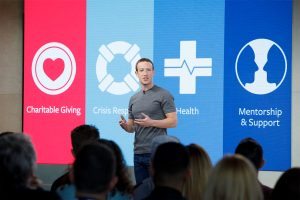Today’s young people are accustomed to having options and choices unlike any previous generation. They’re used to calling the shots. So rather than spending time and money testing ways to write your organization’s story, why not let your younger donors write it for you?
"We’re all acquiring that knowledge, but they were almost built on it," said Pete Rose, partner at marketing firm Yankelovich, regarding younger donors raised in today’s consumer-created world. "They live in a world where you can create the next color of M&M and where you can vote people off the island. Think about the latest Super Bowl ads, some of them were consumer-created."
According to the Yankelovich MONITOR, an annual tracking survey of American consumers, how donors respond to messages is affected by how their attitudes shift. "You’re going through certain life events that affect you no matter whether you were that age today or that age 30 years ago," said Rose. "But, there are specific imprints on each generation." Rose said that Echo Boomers, donors younger than age 30, "have grown up in a world where they have input and control like never before."
That knowledge should translate into creating copy that’s "just the basics," advised Rose. He said it’s vital that a nonprofit teach its Echo Boomer donors how they can build their own movement. "You are really talking about serving up the information in a very raw format, not translating it for them, not telling them why it’s important, not telling them what it’s supposed to mean. Letting them take the bits and pieces and mashing it up themselves," he said. "They’ll see what it means for them."
Rose cautioned that it’s a much more difficult task reaching this group via direct mail, since online has become a way of life for younger donors. "It’s not that a mail piece won’t work, whereas an email or an online piece will. It’s the fact that no matter how you communicate to them, it’s got to be done in a way that is precise, is very targeted to them," he said. The ability to control the where and the when, the what and the how, is an important element of why Internet appeals to this group, added Rose.. "It’s a generation that got raised on the concept of instantaneous."
But going online doesn’t mean a nonprofit can go ahead and dump its mail creative team. "There’s a lot of posing that’s happening by nonprofits online," said Madeline Stanionis, CEO and co-founder of Watershed, an online fundraising and advocacy consulting firm in San Francisco and Washington, D.C., referring to those organizations that attempt to go where young donors are hanging out. "(Nonprofits) try to make themselves into a personality that they think is attractive to young people, and it just becomes a little weird."
So how do you reach the roughly 25 million people, most of whom are ages 12-17, who view video clips on YouTube each month; or the reported 230,000 new registrants, ages ranging between 14 and 30, who sign on to the social networking site Myspace every single day? And how do you benefit from Second Life, a virtual universe that claims more than 1.1 million "residents," where the money is anything but virtual?
"We are living in a really interesting time for how young people connect to each other," said Stanionis. "Young people today keep more in touch with each other than I ever did when I was their age."
That said, "if we know that people tend to give because a friend asked them to give, there’s definitely that power that exists from these inner worlds of social networks — that power of a friend’s recommendation combined with sort of an easy-to-use, in-your-face tool," added Stanionis.
Still, much remains to be desired from the sector’s (lack of) involvement in the popular social networking sites, and in the numerous other Web 2.0 — or, Participatory Web — opportunities that continually pop up, enrapturing millions upon millions of young people, all possible donors.
"Nonprofit organizations need to get better at cultivating younger donors," said Will Schneider, editor-in-chief of Future Leaders in Philanthropy (FLiP), an online initiative launched by Changing Our World, a New York City-based consulting firm for nonprofits. "A lot of nonprofits go into (online social networks) with no particular goal, just sort of blindly," said Schneider. He said nonprofits should first identify the goal, and suggested it go beyond just having a page on a social networking site, along the lines of "trying to build a community."
The first step to building a community of younger donors is "meeting them where they are," said Farra Trompeter, senior associate at Douglas Gould and Company, a New Rochelle, N.Y.-based communications firm for progressive nonprofits. And today, that meeting place is online.
According to Trompeter, it’s not the words that are changing; "nonprofits are just trying to use different methods." She noted a series of "really cool" videos released earlier this year by Amnesty International USA, and another set, yet to be released, created for American Jewish World Service.
"They’re in a sense documenting their works," Trompeter said of both organizations. "They’re inviting donors to come along with them, to engage with them, and they’re doing it all online in a really cool, unique way."
Amnesty International USA created a series of three direct response videos for the charity’s "The America I Believe In" campaign to spread awareness for human rights abuses in the United States-led "war on terror." The charity collaborated with See3 Communications, a Chicago-based media firm that uses the tagline, "where Internet, media and nonprofits come together," and Internet consulting firm Donordigital, in San Francisco.
"Our primary goal was to experiment with the medium, see what sort of response and interest we could garner," said Steve Daigneault, director of Internet communications for Amnesty.
The creative goal was similar: "to appeal to the YouTube generation, to create kind of viral pieces that people would pass on and start talking about," said Michael Hoffman, CEO and co-founder of See3. To get chatter going, said Hoffman, Amnesty agreed to let See3 create one serious clip and two edgier versions. For the latter two, Amnesty employed an improvisational, "Man on the Street" scenario, and hired a comedic host from the famed The Second City improv troupe in Chicago.
The first of the three 90-second video clips was posted on YouTube during early January, and quickly received 15,000 views (it was up to 20,000 views one month later). The second video, one of the "edgier, funny" clips, was posted in February and reached 15,000 views in less than one month.
Regarding other successes of the video clips, "We didn’t have a way to measure success for just the video portion of the campaign," said Daigneault, "but the overall campaign against the Military Commissions Act was successful." The campaign, said Daigneault, broke both Amnesty’s fundraising record for a non-December month and its list-building record for any month. Additionally, it generated 50,000 emails and 5,000 calls in three weeks, "what we thought was a significant amount of actions in a very short period of time," he added.
"I noticed something radically different was happening online," said Hoffman of his decision to launch See3 Communications during 2005. That something, added Hoffman, was broadband, and high-speed Internet was getting less expensive.
Hoffman and partner Danny Alpert, a documentary filmmaker and executive producer at See3, founded the company, which works exclusively with nonprofits, just as the infrastructure of television and the Web were coming together. "And, all of a sudden, the Web opens up the idea that every organization, including nonprofits, could be producing media," said Hoffman. An offshoot of that, he added, is the potential to engage a younger set of donors.
Additionally, Hoffman learned from Alpert that the outreach work around a social-issue documentary was becoming bigger than the documentary itself. Of the last film Alpert directed, said Hoffman, "the budget for outreach was as much as the budget for the production, which had never happened before. And the film became a catalyst for a national conversation about the issue." Hoffman said the shifts both online and in the documentary arena yielded a "kind of ‘Eureka’ moment that, for nonprofits, there was something here."
Trompeter said she’s noticed a similar shift. "A few years ago, everything (online) was Flash and cartoon and animation-y," said Trompeter. "There’s still a viral, pass-along effect to those methods, but now you’re seeing more nonprofits using video, and not just video on their own sites, but on Google and Yahoo!, as well as on YouTube."
According to a See3 spokesperson, the cost to create the Web clips range from the low to mid five figures, depending on the length and whether it’s all-new production or re-purposing of existing footage.
Hoffman said nonprofits can open a new door by creating this culture of documentation. See3’s even launched its own streaming video site, DoGooderTV (dogooder.tv). "The idea is not to be another YouTube," he said. "The idea is to build a much more qualified set of leads for (nonprofit) organizations. And one nonprofit video is inconsequential. But the videos of hundreds and thousands of organizations creates a community." The site is up, but Hoffman said he expects it to be fully operational by this coming fall.
"It’s not about one video anymore. It’s about creating different materials to enhance your Web site and enhance communication with your stakeholders," said Hoffman, who said the introduction of widgets and embedded media players like YouTube have made the content affordable. "So, you no longer have to convene everybody at your place. You’re packaging compelling content in a way that allows young people that are really incredibly good at using these tools, they can carry it to places you would never have access to."
It costs virtually nothing to participate in Second Life (SL), an online, three-dimensional world, launched in 2003 by San Francisco-based software firm Linden Lab. But according to Future Leaders in Philanthropy’s Schneider, the fundraising possibilities are enormous.
Probably the most known example of the fundraising possibilities of Second Life is the American Cancer Society’s virtual Relay 4 Life campaign. The 2006 campaign raised more than $40,000 through Second Life, and attracted more than 1,000 participants in the 24-hour walkathon event, according to the ACS Web site.
"Nobody took (Second Life) seriously," said Stanionis, who said the only thing to outweigh the$40,000 bounty was the virtual absence of any significant budget for the ACS event. "It was held nowhere, required almost nothing," said Stanionis.
To succeed with Second Life, said Schneider, an organization has to be willing to stick with it for a while. "You have to be willing to experiment and try it out," he said. "Right now, it’s a little slow and choppy, and the graphics are sort of good, but not great. But you can see how five years from now, it’s going to be amazing."
Schneider compared nonprofits that tap into Second Life to those people who built a Web site in 1993, just prior to the Internet boom. "I don’t think It is going to be Internet-sized," said Schneider, "but I think it’s going to be a big deal. And nonprofits that get involved early are going to be better for it."











